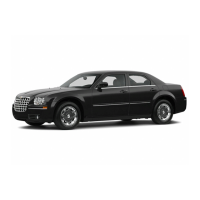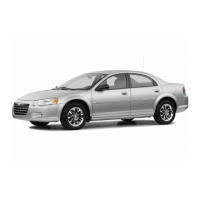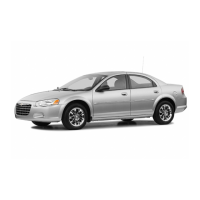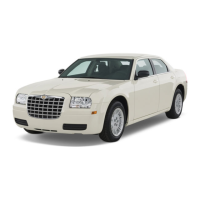CYLINDER BLOCK AND BORE
CLEANING AND INSPECTION
(1) Clean cylinder block thoroughly and check all
core hole plugs for evidence of leaking.
(2) If new core plugs are installed, Refer to Engine
Core Plugs.
(3) Examine block for cracks or fractures.
(4) Inspect for damaged bolt threads. Repair
threads as needed. Refer to Service Procedures,
Repair of Damaged or Worn Threads.
NOTE: Refer to Honing Cylinder Bores outlined in
the Standard Service Procedures for specification
and procedures.
(5) After a cylinder bore honing or deglazing pro-
cedure:
(a) Clean bores with a soap and water solution.
(b) Thoroughly rinse cylinder bores with clean
water to remove soap/water solution and wipe
bores with a clean lint-free cloth.
(c) Oil the bores after cleaning to prevent rust.
CYLINDER BORE INSPECTION
The cylinder walls should be checked for out-of-
round and taper with Tool C-119 (Fig. 146).
Measure the cylinder bore at three levels in direc-
tions A and B (Fig. 146). Top measurement should be
12 mm (0.50 inch.) down and bottom measurement
should be 12 mm (0.50 inch.) up from bottom of bore.
Refer to Engine Specifications.
NOTE: There are no service procedures to bore the
cylinder bores for installation of oversized pistons.
ENGINE HYDRO-MOUNT INSULATORS
Engine hydro-mounts may show surface cracks this
will not effect performance and mount should not be
replaced. Only replace the engine hydro-mounts
when leaking fluid:
• Drive shaft distress: Refer to Driveshafts in Sus-
pension, Group 2.
• Any front end structural damage (after repair).
• Insulator replacement.
TIMING BELT INSPECTION—IN VEHICLE
(1) Remove the accessory drive belts. Refer to
COOLING SYSTEM for procedure.
(2) Remove timing belt covers. Refer to procedure
in this section.
(3) Inspect both sides of the timing belt. Replace
belt if any of the following conditions exist (Fig. 147):
(a) Hardening of back rubber back side is glossy
without resilience and leaves no indent when
pressed with fingernail.
(b) Cracks on rubber back.
(c) Cracks or peeling of canvas.
(d) Cracks on rib root.
(e) Cracks on belt sides.
(f) Missing teeth.
(g) Abnormal wear of belt sides. The sides are
normal if they are sharp as if cut by a knife.
(h) Vehicle mileage at component maintenance
requirement. Refer to LUBRICATION AND MAIN-
TENANCE.
(4) If none of the above conditions are seen on the
belt, the belt cover can be installed.
NOTE: If belt requires replacing, ensure the proper
length belt is used.
Fig. 146 Checking Cylinder Bore Size
9 - 142 3.2/3.5L ENGINE LH
CLEANING AND INSPECTION (Continued)

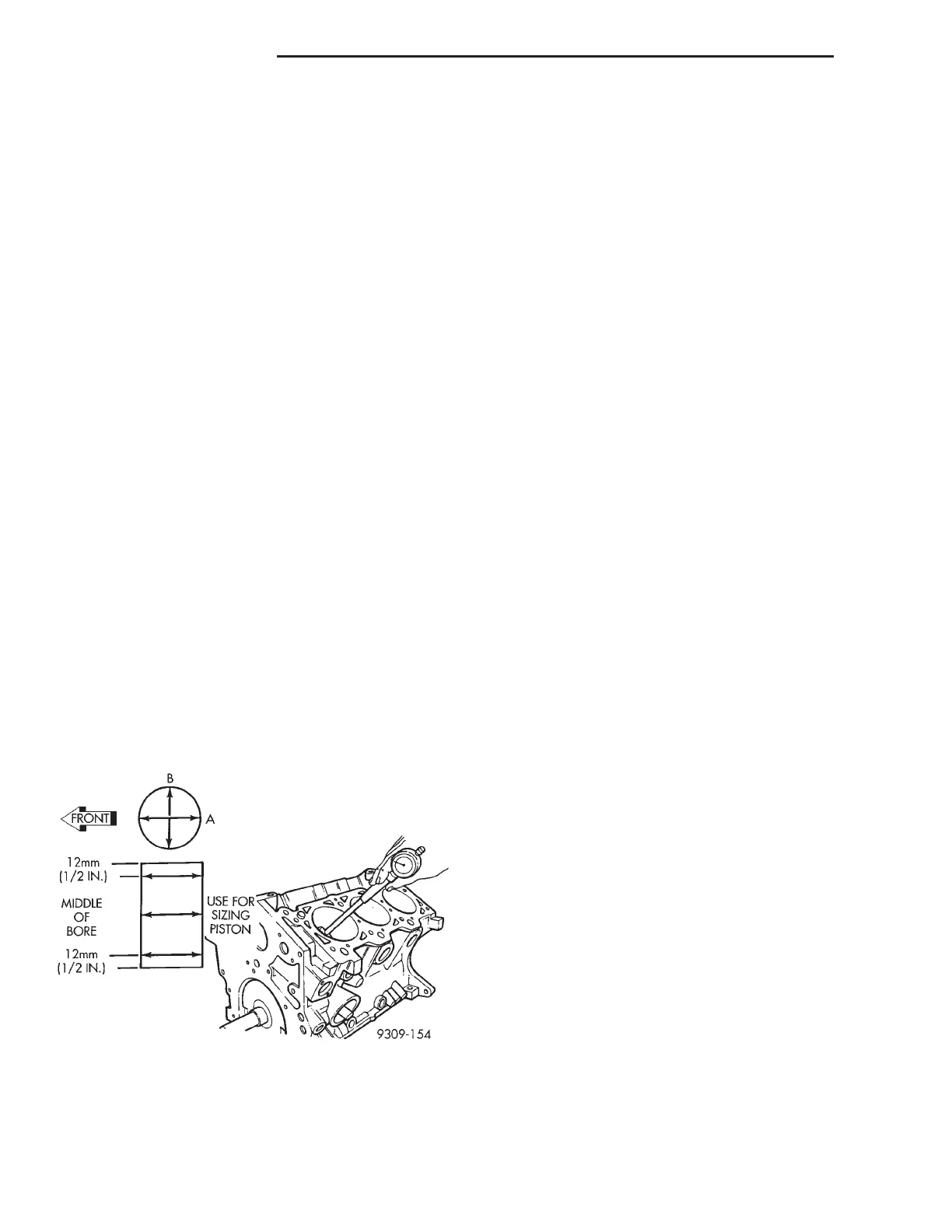